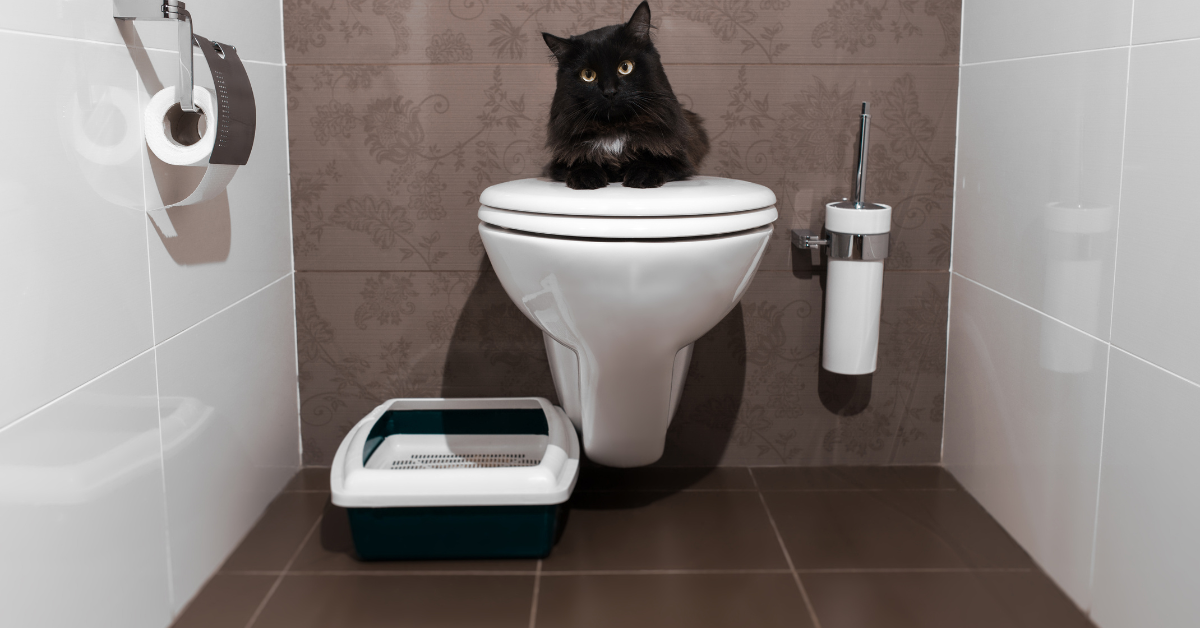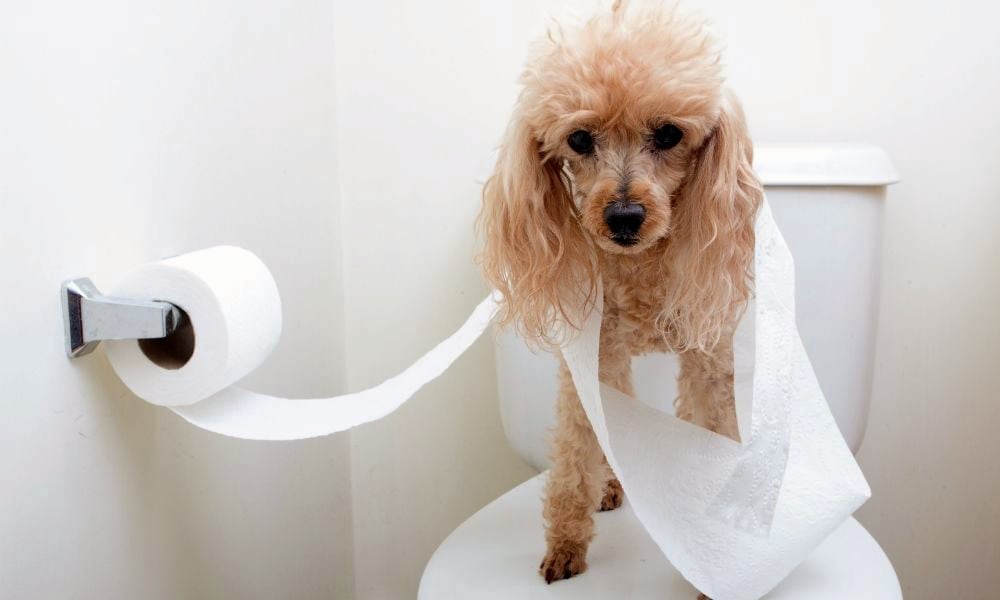What Flushing Animal Waste Down the Toilet Could be Harmful
What Flushing Animal Waste Down the Toilet Could be Harmful
Blog Article
Do you find yourself interested in information on Can You Flush Dog and Cat Poo Down the Toilet??

When it concerns throwing away waste, specifically animal waste, many individuals frequently resort to the hassle-free option of flushing it down the bathroom. Nonetheless, this seemingly easy service can have serious consequences for the setting and public health. In this write-up, we'll discover why flushing pet waste down the toilet is a poor concept and give different techniques for appropriate disposal.
Introduction
Correct waste disposal is important for preserving environmental sustainability and public health. While it might seem harmless to purge animal waste down the bathroom, it can result in different concerns, both for the atmosphere and human health.
Dangers of flushing pet waste
Environmental effect
Purging pet waste presents harmful germs and pathogens right into waterways, which can negatively impact marine ecosystems. These virus can contaminate water resources and damage aquatic life, interrupting delicate environments.
Public health concerns
Pet waste contains damaging microorganisms such as E. coli and Salmonella, which can posture significant health and wellness threats to human beings. Flushing pet waste down the toilet can contaminate water supplies, leading to the spread of diseases and infections.
Alternatives to flushing
As opposed to purging pet waste down the bathroom, there are several alternative disposal approaches that are a lot more eco-friendly and hygienic.
Composting
Composting animal waste is an environmentally friendly way to dispose of it. By composting, raw material is broken down into nutrient-rich dirt, which can be utilized to fertilize yards and plants.
Landfill disposal
Throwing away animal waste in a garbage dump is one more choice. While not as eco-friendly as composting, it is a safer alternative to flushing, as it avoids the contamination of water sources.
Pet garbage disposal systems
There are specialized animal garbage disposal systems readily available that safely and hygienically deal with pet waste. These systems commonly utilize enzymes to break down waste and eliminate odors.
Actions to appropriate pet waste disposal
To make sure correct disposal of pet waste, follow these actions:
Scooping and bagging waste
On a regular basis scoop and bag pet waste making use of biodegradable bags. This avoids waste from polluting the atmosphere.
Utilizing assigned waste containers
Dispose of bagged animal waste in designated waste containers, such as garden compost bins or landfill bins. Stay clear of flushing it down the commode in check here any way costs.
Cleaning litter boxes and pet dog locations routinely
Regularly tidy litter boxes and pet locations to avoid the buildup of waste and microorganisms. Use pet-safe cleansing products to preserve health.
Advantages of proper disposal techniques
Adopting correct disposal methods for pet waste offers a number of benefits:
Minimized environmental pollution
Proper disposal approaches reduce the danger of environmental pollution, protecting waterways and ecological communities from contamination
Reduced threat of water contamination.
By staying clear of flushing animal waste down the bathroom, the threat of water contamination is significantly lowered, safeguarding public health.
Enhanced cleanliness and health
Correct disposal approaches advertise better sanitation and hygiene, developing a safer setting for both people and pets.
Final thought
Finally, flushing animal waste down the toilet is hazardous to the setting and public health. By embracing different disposal techniques and complying with correct waste management techniques, we can lessen the negative impact of animal waste and contribute to a cleaner, healthier earth.
What To Do With Dog Poo – The Do's And Don'ts Of Disposing Of Faeces
Dog poo bins
Some councils provide dedicated dog waste bins in popular dog-walking areas that can take dog poo that has been bagged but you can legally dispose of dog waste in any public litter bin, as long as it is securely bagged. This also applies to your wheelie bin at home.
Do not flush
Water companies do not recommend flushing dog faeces down the toilet because certain parasites can survive the water processing treatment and are potentially harmful to humans. You should also never consider flushing dog poo that has been bagged down the toilet as the bags will not break down and instead create severe blockages in the sewage system.
In the woods
The Forestry Commission promotes a ‘stick and flick’ method for dealing with waste in the woods. This means finding a stick and using it to flick any poo from off the path so that it is out of the way of other walkers. You could also bury it as long as it is not in an area where there might be livestock.
Livestock
Parasites found in dog poo can be transmitted to livestock if they inadvertently eat infected faeces that has been left on grazing land. This could result in the death of sheep or abortion in cattle so you should always make sure you pick up your dog’s waste in fields where livestock could be present.

Regularly tidy litter boxes and pet locations to avoid the buildup of waste and microorganisms. Use pet-safe cleansing products to preserve health.
Advantages of proper disposal techniques
Adopting correct disposal methods for pet waste offers a number of benefits:
Minimized environmental pollution
Proper disposal approaches reduce the danger of environmental pollution, protecting waterways and ecological communities from contamination
Reduced threat of water contamination.
By staying clear of flushing animal waste down the bathroom, the threat of water contamination is significantly lowered, safeguarding public health.
Enhanced cleanliness and health
Correct disposal approaches advertise better sanitation and hygiene, developing a safer setting for both people and pets.
Final thought
Finally, flushing animal waste down the toilet is hazardous to the setting and public health. By embracing different disposal techniques and complying with correct waste management techniques, we can lessen the negative impact of animal waste and contribute to a cleaner, healthier earth.
What To Do With Dog Poo – The Do's And Don'ts Of Disposing Of Faeces
Dog poo bins
Some councils provide dedicated dog waste bins in popular dog-walking areas that can take dog poo that has been bagged but you can legally dispose of dog waste in any public litter bin, as long as it is securely bagged. This also applies to your wheelie bin at home.
Do not flush
Water companies do not recommend flushing dog faeces down the toilet because certain parasites can survive the water processing treatment and are potentially harmful to humans. You should also never consider flushing dog poo that has been bagged down the toilet as the bags will not break down and instead create severe blockages in the sewage system.
In the woods
The Forestry Commission promotes a ‘stick and flick’ method for dealing with waste in the woods. This means finding a stick and using it to flick any poo from off the path so that it is out of the way of other walkers. You could also bury it as long as it is not in an area where there might be livestock.
Livestock
Parasites found in dog poo can be transmitted to livestock if they inadvertently eat infected faeces that has been left on grazing land. This could result in the death of sheep or abortion in cattle so you should always make sure you pick up your dog’s waste in fields where livestock could be present.

Do you really like more info about 4 Reasons Why Dog Poop Cleanup is Important? Try leaving a short review below. We'd be glad to find out your ideas about this write up. We are looking forward that you come back again in the near future. Are you aware of another individual who is fascinated about the subject? Feel free to share it. Thanks for being here. Kindly check up our website back soon.
This Post Report this page